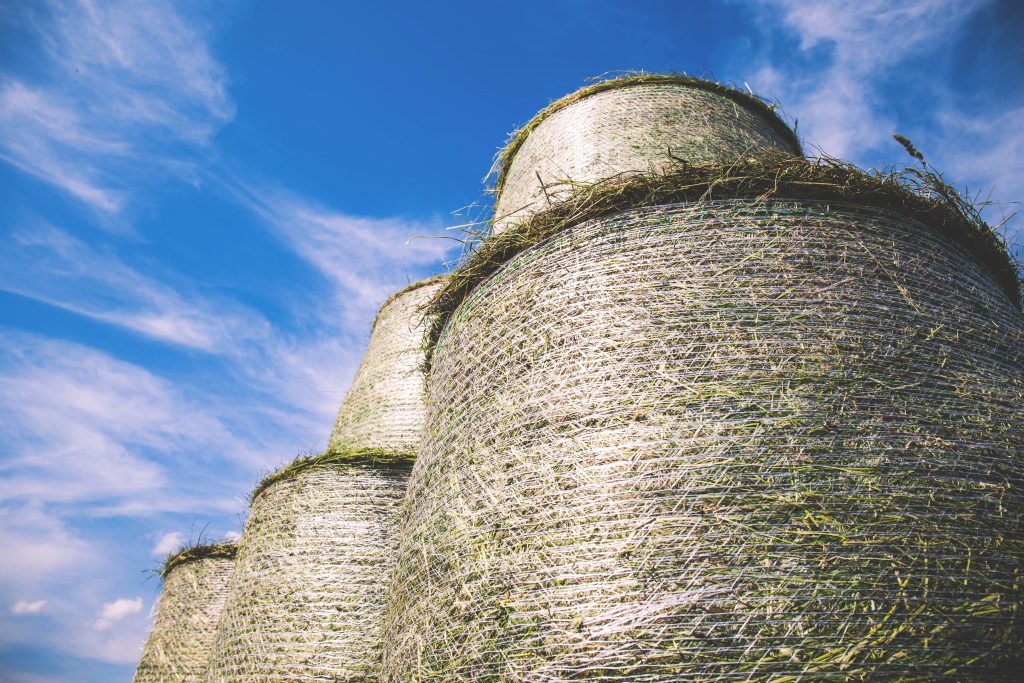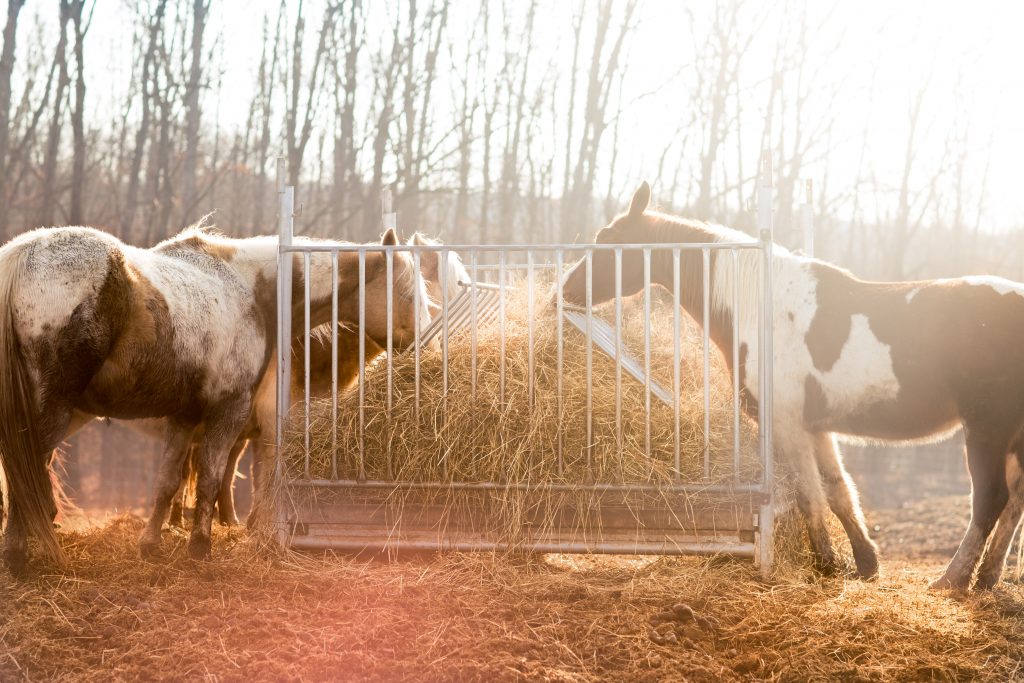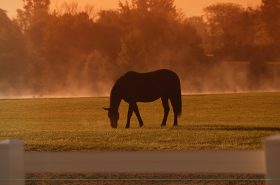Hay is likely on many people’s minds this time of year. Most of us are stocking up in order to get ready for the coming fall and winter. Of course, we all know that hay can be one of the more expensive parts of horse ownership, but fortunately, there are several ways to make your hay supply last longer and ultimately, save you money.

Horses need to eat between 1.5%-2% of their body weight in forage daily. This would mean 15-20 lbs for a 1000 lb. horse. Skimping on forage is never advisable, but here are a few ways you can stretch your supply:
Feed smaller amounts more often
While this may take more work on our part, it can actually reduce the amount of wasted hay. Instead of feeding hay two times per day, try feeding three or four times. If horses have less at a time, they are more likely to eat all of it.
Slow Feeders
Slow feeders are becoming increasingly popular and for good reason. Not only do they slow down your horse’s hay consumption rate and help stretch your hay supply, but they also mimic a horse’s natural grazing methods. In the wild, horses eat small amounts of forage over an extended period of time. Designed with smaller openings than traditional hay bags, slow feeders enable your horse to do the same. There are a wide variety of options available, and you can even make your own. Just make sure the openings on your slow feeder are large to enable your horse to eat without becoming overly frustrated.
Adding hay pellets, cubes, or bagged forage
Commercial forage products such as hay pellets, cubes, or chaffhaye are high in fiber and can be a great choice when you need to make your baled hay last. These products are also great for older horses with dental issues who may have trouble eating hay. Just be aware that both pellets and cubes can be a choking hazard if fed dry. Soaking in water is recommended.

Round Bale Feeders
Horses are notorious for wasting round bale hay, but studies have shown that using a round bale feeder or net can drastically reduce the amount of wasted hay. The money you spend on a feeder will save you money in the long run. Just make sure to purchase a feeder designed for horses as they can injure themselves with some cattle feeders.
To read about what hay your horse should be having click here!
*Casie Bazay is a freelance and young adult writer, as well as an owner/barefoot trimmer and certified equine acupressure practitioner. She hosts the blog, The Naturally Healthy Horse, where she regularly shares information on barefoot, equine nutrition, and holistic horse health. Once an avid barrel racer, Casie now enjoys just giving back to the horses who have given her so much. Follow Casie at www.casiebazay.com.



